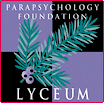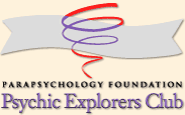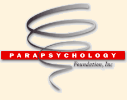 |
 |
| THE BIOGRAPHICAL DICTIONARY OF PARAPSYCHOLOGY GLADYS OSBORNE LEONARD Medium. B. 1882. Universally recognized as one of the greatest of all trance mediums, Mrs. Leonard is noted not only for the quality of her mediumship but for her integrity and her willingness to cooperate with psychical researchers. She was described as "the British Mrs. Piper" (in a reference to the famous American medium) by W. Whately Carinton (q.v.) who observed her work on many occasions. Mrs. Leonard's mediumship dates from early childhood when, as she reports in her autobiography My Life in Two Worlds (1931), she frequently "saw vision." As a young woman she began to hold seances and in their course her "control"-allegedly the spirit of a young Indian girl named Feda who died in 1800-first evidenced itself. In early 1914 "Feda" instructed Mrs. Leonard to become a professional medium, at the same time predicting that "something big and terrible is going to happen to the world, and Feda must help many people through you." In 1915, following the death of his son in World War I, Sir Oliver lodge (q.v.) had many sittings with Mrs. Leonard, during which he became convinced that he had received evidence of his son's post-mortem existence. With the publication in 1916 of Lodge's book Raymond, which contained accounts of these sitting, Mrs. Leonard became famous overnight. For three months in 1918 Mrs. Leonard worked exclusively for the Society for Psychical Reearch, giving a total of 73 sittings. In many of these materials was produced that seemed to sitters and researchers strong evidence of life beyond death. It was also at this tme that the Reverend C. Drayton Thomas (q.v.) began making his "book tests" with Mrs. Leonard. Designed to eliminate the possible influence of telepathy in seances, theese were tests in which supposed messages from deceased persons took the form of references to a specific sentence or paragraph in a book, references which were transmitted by the medium from the "communicator" during trance. Much of the book-test material was used to Whately Carington in his quantitative study of mediumship, and Mrs. Leonard was also one of the mediums to whom Carington applied the psychological technique known as the word-association test. The test was first applied to the medium in her normal waking state, and then, with the medium in trance, to her "control." In the case of Mrs. Leonard, it was found that words to which she responded quickly evoked exceptionally long reaction times when given to "Feda," and vice versa, suggestion that the "control" was not a personality distinct from Mrs. Leonard but a secondary personality built up from material suppressed in the medium's normal waking life. Carington's experiments are reported in the SPR Proceedings (Part 136, Vol. 52, 1934; Part 141, Vol. 53, 1935; Part 149, Vol. 54, 1936-37). Besides her autobiography, Mrs. Leonard is author of the books Brief Darkness and The Last Crossing. Taken from Helene Pleasants (1964) Biographical Dictionary of Parapsychology with Directory and Glossary 1946-1996 NY: Garrett Publications |
 |

|
 www. parapsychology. org |
||